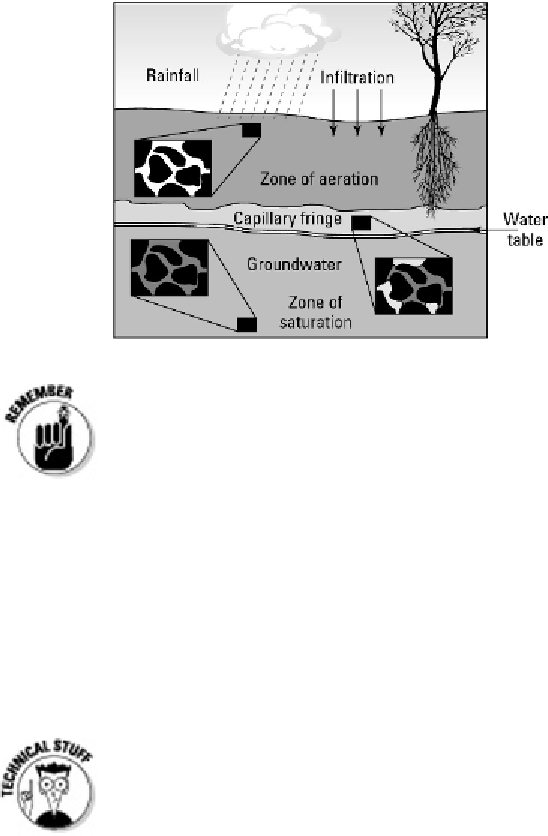Geology Reference
In-Depth Information
The boundary between the zone of aeration and the zone of saturation is
called the
water table.
At the water table, an interesting interaction occurs. While the water is being pulled
downward by gravity, some water is also moving upward into the lowest part of the zone
of aeration — against the pull of gravity. This upward movement is called
capillary ac-
tion.
You may also call it
wicking action
because it mirrors the way a tissue or paper tow-
el, if dipped in water, draws the water upward (or the way your pant cuffs get wet from
walking on wet streets). This capillary action occurs just above the water table in an
area called the
capillary fringe.
Capillary action is the result of the attraction of water molecules to other mo-
lecules or surfaces (due to the slight polarity of a water molecule, which I briefly
describe in Chapter 5). This attraction overcomes the pull of gravity, allowing the
water to move upward.
Springing from rocks
Groundwater flows, for the most part, below ground. But at certain places, the water
table intersects the earth's surface due to the folding of rock layers or erosion. Ground-
water can appear on the surface in the form of lakes, swamps, and springs.


